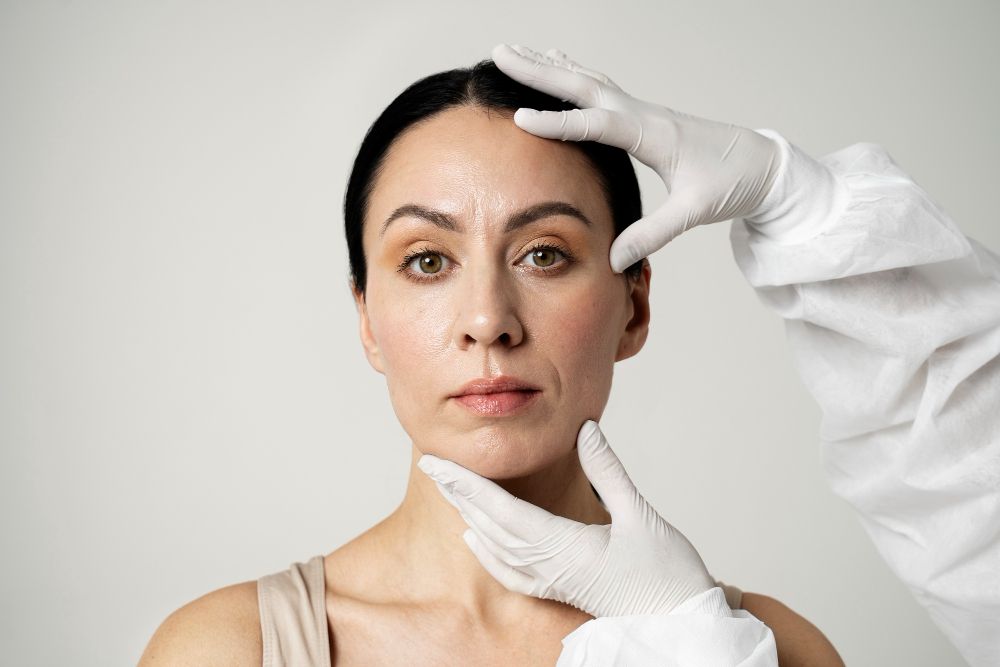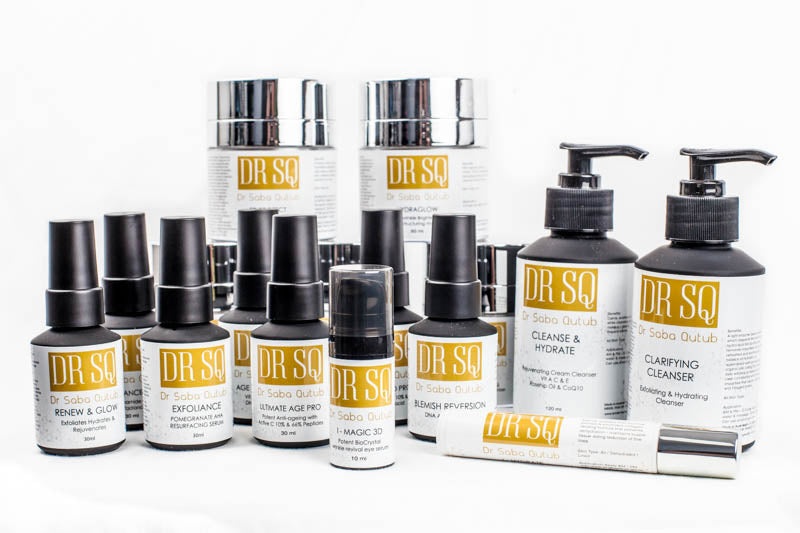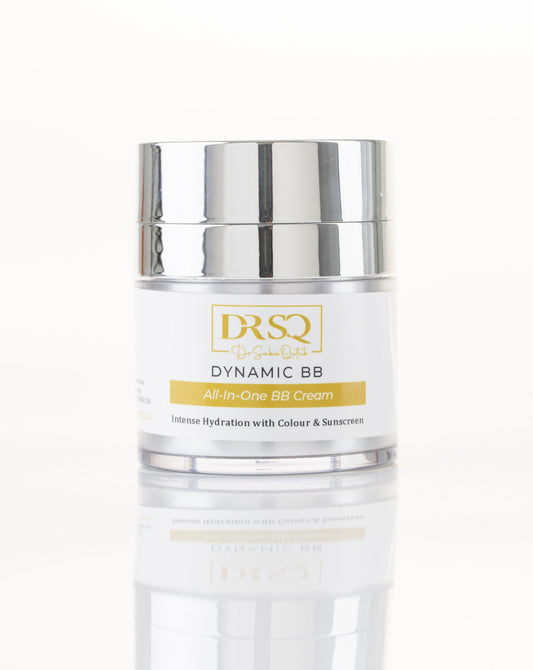Retinoids for Ageing Skin: Types, Routine, and Our Top Picks

Retinoids have been quite popular among anti-ageing enthusiasts since the 1970s. However, with the latest developments and research, the choices have been narrowed. Now, people are looking for specific types of retinoids for their wrinkles and sagging skin.
You may find yourself stuck with brands boasting about their products being the best, but they still make no difference in the skin. It's because before you shop for retinoids, you must know how they work, and which retinoid type would work for your ageing skin.
In this blog, we will explore retinoid types and their effectiveness for anti-ageing skincare, so it will help you find out the best option for you.
What are Retinoids
Retinoids are vitamin A derivatives, used to treat acne, ageing concerns, and skin conditions like psoriasis and pigmentary disorders. They can reduce inflammation and have a role in cell growth regulation.
Structurally, retinoids are similar to vitamin A. They are available in both over-the-counter (for weaker forms) and prescription-strength formulations (for stronger forms). Both oral and topical retinoids can make significant differences in your skin conditions, depending on how disciplined you are, given that you are taking the right type of retinoid.
Retinoids for Anti-Ageing
Your skin experiences collagen loss as you age. Collagen is an essential protein that contributes to youthful skin, plumpness, and texture. Another concern for the ageing skin is reduced cellular turnover. Cellular turnover is the skin's regeneration process through which it sheds old cells and replaces them with new ones. Both these factors result in ageing signs like wrinkles, fine lines, sagging skin, crow's feet, and smile lines.
Here comes the role of retinoid in your ageing skin. Retinoids can help with new collagen production and slow down the degradation of collagen that is already present in the skin. Free radicals can contribute to damaged skin collagen. Retinoids neutralise them, help with inflammation, and irritation.
Which Retinoid is the Best for Anti-Ageing
When it comes to targeting ageing signs, six major types of retinoids stand out.
Retinol
This is the most heard-about and commonly used vitamin A derivative among the family. Found in OTC retinoid products like serums and moisturisers, retinol enhances proliferation.
Retinaldehyde
Also known as retinal, retinaldehyde is a better alternative for OTC retinol. It's potent and mild on the skin, may suit sensitive skin types, and targets ageing and photoageing.
Adapalene
Another OTC and affordable retinoid, primarily used to treat acne, but may help with premature ageing signs. With the consistent use, it can smooth out your skin's texture and roughness.
Tretinoin
Available with prescription, this retinoid works well with skin types already used retinol and desire a strong anti-ageing support.
Retinyl Palmitate
This form is considered a mild option, making it suitable for sensitive or very dry skin. It is gentler than retinol and helps reduce mild ageing signs.
Tazarotene
You can get this retinoid with a prescription only. It helps with wrinkle reduction, inflammation, and several conditions, including acne and psoriasis. It's a strong acid and reacts with the skin, if not well-tolerated with the stronger retinoids.
Which One Should You Use
When it comes to treating wrinkles, every retinoid is unique for each skin type and concern. While retinol is the most commonly used retinoid, your skin may or may not be able to tolerate this powerful vitamin A derivative.
Retinaldehyde or retinal is a gentler alternative than prescription-strength retinoids like tretinoin and more potent than retinol, and could be compatible with your skin. Moreover, it has a closer proximity to the active form of vitamin A and tends to maintain its effectiveness for a longer period than retinol.
Also Read: Retinol vs Retinaldehyde: What Sets Them Apart?
The right retinoid is not one-size-fits-all. Pick your retinoid type based on your skin type, concern, and your skin's tolerance.
How to Introduce Retinoids In Your Skincare
Understand your skin type, concern, and its intensity. It’s highly recommended to consult your doctor before adding any retinoid to your skincare regimen. Begin with a low concentration. Regardless of the low-concentration product you choose, a patch test is unavoidable.

To test the product, take a tiny amount and apply it to your jawline on alternate nights. Seal with a moisturiser. Observe your skin for irritation, peeling, or any kind of noticeable difference. If your skin behaves good, you can add the product into your routine.
In the beginning, keep your application frequency up to two to three times a week. Increase it gradually as your skin builds its tolerance for retinoid. Use them at night only, as retinoids can increase your skin’s sensitivity to UV light. Apply a broad-spectrum sunscreen during the day.
3 Strengths of Retinoid Serums With Retinaldehyde
DRSQ has 3 strengths of retinaldehyde to target all aspects of mature skin, reverse topical signs of ageing, and loose skin. They are formulated with powerful actives like niacinamide to calm sensitive skin, regulate oil production, and fade post-acne hyperpigmentation tetrapeptide-30 to reduce acne lesions and improve melasma and hyaluronic acid to deeply hydrate the skin.
Wash your skin with any of the cleansers of your choice. Take two to three drops of the retinaldehyde serum and apply all over the face and neck. Cap off your regimen with a moisturiser.
-
Starter Vitamin A with 0.25% retinaldehyde: This serum is made for retinoid beginners. It’s a low-strength vitamin A and eases your skin to retinoid use.

-
Miracle Provitamin Serum with 0.5% retinaldehyde: If your skin has already built up retinoid tolerance, this can be a go-to option.

-
Advanced Vitamin A Serum with 1% retinaldehyde: This is a higher concentration for skin well-tolerated with retinoids.

Retinoids Side Effects
Retinoids are powerful ingredients but come with some drawbacks, which are potential side effects. If you are new to them, you may have to face mild irritation, to little redness and burning. But these effects subside as your skin gets familiar with the ingredient. Some retinoids can also first aggravate your acne before treating it.
The other common side effects include;
- Dryness
- Flakiness
- Roughness
- Purging
- Peeling
- Sensitivity to sunlight
- Inflammation
- Is Retinoid the Same as Retinol
No, retinoid is not the same as retinol. Retinoid is an umbrella term, refers to the vitamin A derivatives, and retinol falls under it. Retinol is a type of retinoid that is primarily identified as an anti-ageing ingredient around the world.
Are All Retinoids the Same
No two retinoids are exactly the same. They all belong to the vitamin A family but differ in terms of strength, conversion, side effects, and potency. Retinoids include both over-the-counter such as retinaldehyde, retinol, and retinyl palmitate, and prescription-based options like adapalene and tretinoin. Each retinoid has its own unique identity and usage, and is used for several skin concerns apart from ageing.
Key takeaways
- Retinoids belong to the vitamin A family and are popularly used to treat ageing problems, including fine lines, wrinkles, and loose skin.
- They stimulate cellular turnover and collagen production to make skin youthful and even.
- While retinol is the most popular, retinaldehyde is a milder alternative and beginner-friendly.
- There is no universal retinoid to work for everyone. Choose your retinoid according to your skin type, concern, and skin tolerance.
- As a beginner, start with a lower-concentration formulation. Observe your skin's behaviour towards the ingredient and then slowly increase the application count.
- From dryness, flakiness, to rough patches, inflammation and burning, retinoids can have mild to severe side effects on the skin. A patch test is necessary before use.
References:
- American Academy of Dermatology Association. Retinoids: What They Are and How to Use Them.
- Clinical Interventions in Aging, 1(4), 327–348.
- Archives of Dermatology, 143(5), 606–612.
- Improvement of naturally aged skin with vitamin A (retinol). Arch Dermatol, 143(5), 606–612.
- Retinoids and their utility in dermatologic therapy. Clinics in Dermatology, 38(6), 661–665.
- Journal of the American Academy of Dermatology, 45(5), S68–S76.
-
Journal of Dermatological Science, 98(3), 186–192.



